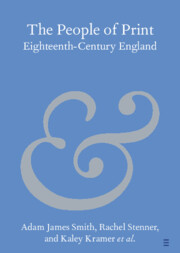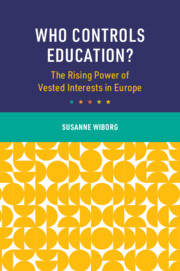Refine search
Actions for selected content:
357 results
8 - The Mycenaean World
-
- Book:
- Mycenaean Civilization
- Published online:
- 19 December 2025
- Print publication:
- 15 January 2026, pp 513-538
-
- Chapter
- Export citation
Chapter 23 - Gendered Journeys
- from Part IV - Environments and Institutions
-
-
- Book:
- Fanny Hensel and Felix Mendelssohn in Context
- Published online:
- 19 December 2025
- Print publication:
- 08 January 2026, pp 182-190
-
- Chapter
- Export citation
Chapter 24 - England
- from Part IV - Environments and Institutions
-
-
- Book:
- Fanny Hensel and Felix Mendelssohn in Context
- Published online:
- 19 December 2025
- Print publication:
- 08 January 2026, pp 191-198
-
- Chapter
- Export citation
Chapter 32 - Felix Mendelssohn’s Reception in His Lifetime
- from Part VI - Reception and Legacies
-
-
- Book:
- Fanny Hensel and Felix Mendelssohn in Context
- Published online:
- 19 December 2025
- Print publication:
- 08 January 2026, pp 260-267
-
- Chapter
- Export citation

Justice for Some
- A Comparative Study of Miscarriages of Justice and Wrongful Convictions
-
- Published online:
- 19 December 2025
- Print publication:
- 22 January 2026
-
- Book
-
- You have access
- Open access
- Export citation
Chapter 3 - Place, Transcendence, and Equivocal Nostalgia in Lynette Roberts’ Gods with Stainless Ears and T. S. Eliot’s Four Quartets
-
- Book:
- Nostalgia and National Identity in the British and Irish Modernist Epic
- Published online:
- 27 November 2025
- Print publication:
- 18 December 2025, pp 81-111
-
- Chapter
- Export citation
Case 27
-
- Book:
- Debating Papal History, c. 250–c. 1300
- Published online:
- 03 November 2025
- Print publication:
- 20 November 2025, pp 244-254
-
- Chapter
- Export citation

The Recognition of Sovereignty
- Politics of Empire in Early Anglo-Scottish Literature
-
- Published online:
- 09 October 2025
- Print publication:
- 23 October 2025
Chapter 13 - England
- from The Nordic World and the British Isles
-
-
- Book:
- The Cambridge Guide to Global Medieval Travel Writing
- Published online:
- 03 October 2025
- Print publication:
- 02 October 2025, pp 237-252
-
- Chapter
- Export citation
Chapter 38 - The Atlantic and the Americas
- from Asia and the Americas
-
-
- Book:
- The Cambridge Guide to Global Medieval Travel Writing
- Published online:
- 03 October 2025
- Print publication:
- 02 October 2025, pp 672-685
-
- Chapter
- Export citation
Bad Grammar: Teachers, Crime, and the Law in Late Medieval and Early Modern England
-
- Journal:
- History of Education Quarterly / Volume 65 / Issue 4 / November 2025
- Published online by Cambridge University Press:
- 23 September 2025, pp. 517-535
- Print publication:
- November 2025
-
- Article
-
- You have access
- HTML
- Export citation

The People of Print
- Eighteenth-Century England
-
- Published online:
- 20 September 2025
- Print publication:
- 16 October 2025
-
- Element
- Export citation
Chapter 2 - Revival Cheerlessness
- from Part I - Revivalism and the Call for Renewal
-
-
- Book:
- The Revival in Irish Literature and Culture
- Published online:
- 04 September 2025
- Print publication:
- 18 September 2025, pp 53-71
-
- Chapter
- Export citation
‘your poore distressed suppliant’: ‘Madness’, Emotion and the Archive in Early Modern England
-
- Journal:
- Transactions of the Royal Historical Society , First View
- Published online by Cambridge University Press:
- 02 September 2025, pp. 1-24
-
- Article
-
- You have access
- Open access
- HTML
- Export citation
1 - Punishment Is Part of Tort Law
- from Part I - The Place of Punishment in Torts
-
- Book:
- Torts and Retribution
- Published online:
- 09 August 2025
- Print publication:
- 28 August 2025, pp 21-49
-
- Chapter
- Export citation
Noticing, identifying and discriminating sociolinguistic variants in England
-
- Journal:
- English Language & Linguistics , First View
- Published online by Cambridge University Press:
- 30 July 2025, pp. 1-32
-
- Article
-
- You have access
- Open access
- HTML
- Export citation
Chapter 3 - Great Britain and Ireland
- from Part I - Life and Death
-
-
- Book:
- Percy Shelley in Context
- Published online:
- 17 April 2025
- Print publication:
- 24 April 2025, pp 18-25
-
- Chapter
- Export citation
2 - Getting Entrenched
-
- Book:
- Who Controls Education?
- Published online:
- 26 March 2025
- Print publication:
- 03 April 2025, pp 36-60
-
- Chapter
- Export citation

Who Controls Education?
- The Rising Power of Vested Interests in Europe
-
- Published online:
- 26 March 2025
- Print publication:
- 03 April 2025
6 - Putting the Spoke(s) in: Curial Centrality and Local Agency in the Pre-Reformation Church
- from Part II - The Roman Curia
-
-
- Book:
- The Cambridge History of the Papacy
- Published online:
- 28 February 2025
- Print publication:
- 20 March 2025, pp 157-181
-
- Chapter
- Export citation
